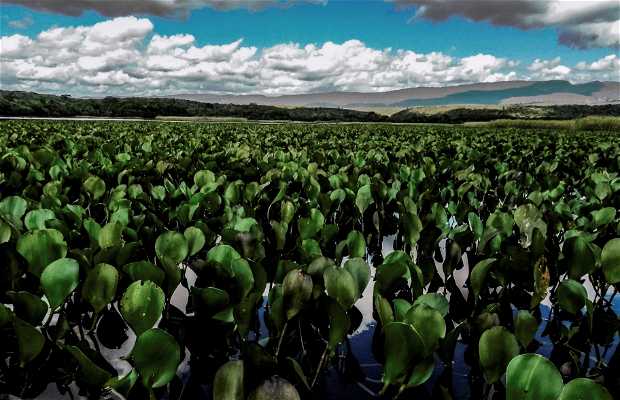Magali Abreu
A mini wetland in full Chapada Diamantina
Um mini pantanal em plena chapada diamantina
Para mim um dos lugares mais encantadores da Chapada Diamantina (Bahia - Brasil) se chama Pantanal Marimbus.
Saímos de carro pela estrada de asfalto de Mucugê até a reserva de Marimbus, contratamos um guia na entrada da reserva e seguimos com ele por uma estrada de barro estreita mas de fácil acesso e chegamos até o local onde embarcamos em um caiaque para até 3 pessoas para um passeio a remo (não é permitido o uso de motores nos barcos) por aproximadamente 3 horas pela região conhecida como Marimbus, o mini pantanal da Chapada Diamantina.
O Pantanal de Marimbus com vegetação pantaneira, é formado por várias nascentes da Serra do Sincorá que depois formam o maior rio da Bahia, o Paraguaçú. Nosso guia muito simpático nos mostrou essas belas paisagens e nos deixou tontos com tanta beleza! O silencio reinante nos permitia ouvir ao longe as vozes de pescadores do local. As fotografias que tirei nem chegam perto do que vimos e desfrutamos, no final do passeio tomamos ainda um belo, frio e refrescante banho no rio. Um passeio inesquecível!!
For me one of the most charming places of Chapada Diamantina (Bahia - Brazil) is called Pantanal Marimbus. Samos drive down the asphalt road Mucug at the booking Marimbus, we hired a guide at the entrance of the reservation and follow him down a narrow dirt road but easy access and arrived at the place where we boarded a kayak for up to 3 people for a ride rowing (the permitted use of motors in boats) for about 3 hours in the region known as Marimbus, the mini wetland of Chapada Diamantina. The Pantanal Marimbus with Pantanal vegetation, formed by several springs in the Serra do Sincor which then form the largest river in Bahia, the Paragua. Our very sympathetic guide showed us these beautiful landscapes and left us dizzy with so much beauty! The reigning silence allowed us to hear in the distance local fishermen's voices. The pictures I took do not even close to what we have seen and enjoyed at the end of the ride even take a nice, cold and refreshing bath in the river. An unforgettable ride !!



+4




